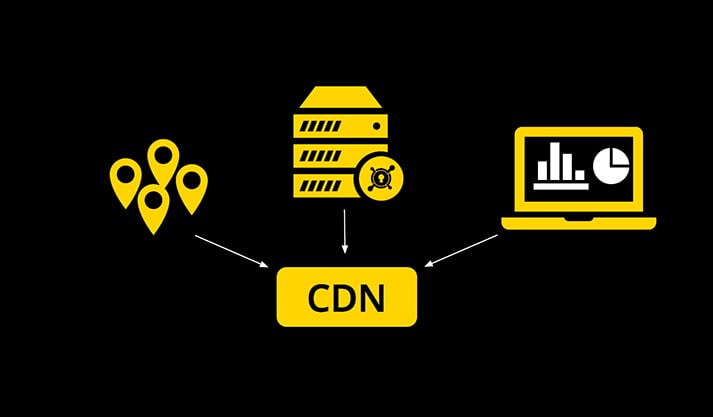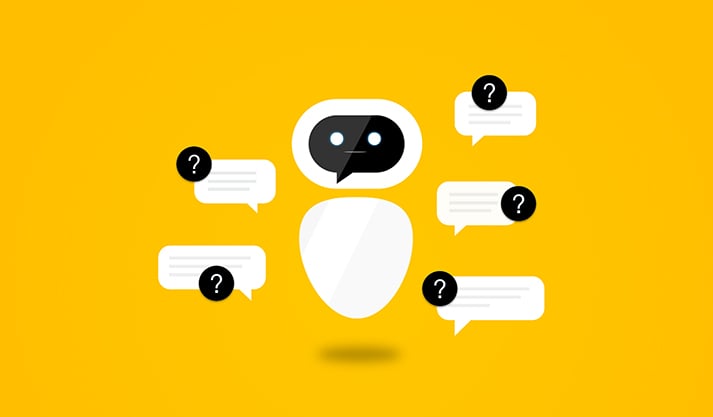The year 2019 is set to change how a number of technologies are used and how companies interact with their customers. Here are five trends we predict to play crucial roles this year:
Artificial intelligence
It has been a trend for a number of years and will continue to be one for the foreseeable future: Digital disruption in many different industries is driven by AI capabilities or headed toward the application of AI and related technologies. The prospect of being able to leave certain tasks, many of them repetitive and/or simple, to machines and free up humans for work that requires more judgment and intuition is just as attractive now as it was last year.
One very visible aspect of this will once again be the implementation of chatbots. As anyone who has ever used a chatbot knows, the technology is still very much in its infancy and is usually only applicable within a very finite space of content matter. As natural language processing improves, however, so will the performance of chatbots and their value for businesses.
However, AI will also become more important in the acquisition of business intelligence and in gauging sentiment among customers and target demographics. In essence, AI is what small and large companies alike should invest in to ensure their continued competitiveness.
Privacy and data protection
The official implementation of the European Union’s data protection policy GDPR has delivered a near-fatal blow to direct marketing in the EU. It has wiped out the usefulness of personal information databases some companies had previously acquired through less-than-honest means. The threat of EU sanctions hangs over companies that don’t clean up their act like the sword of Damocles. And yet, a number of firms are still not compliant with GDPR. Expect some major fines to be handed down this year as the EU makes a statement to show that it is not to be trifled with.
Let’s be honest, very few companies that engage in direct marketing or used customer data for any other purpose were thrilled about the added procedures that needed to be put in place with the advent of GDPR. But for EU customers, non-compliance with these rules will be a deal breaker in the future. As thousands of sites and companies still refuse to update their privacy policies or prove too lazy to do so, this will lead to customers adding crucial new criteria to their decision-making process: Does this company commit to taking care of my data? Don’t be a company where the answer to that question is “no”, because you will not be able to meaningfully engage with your customers unless they trust that you will not misuse their data.
The IoT and Edge Computing
Having the Internet of Things and Edge Computing on such a list as separate items is redundant at this point, as they have become ever more intertwined. The number of connected devices is growing exponentially each year, as is the amount of data they produce. Processing this gigantic volume of data in the cloud will no longer be feasible in the very near future, which is why processing this data on the edge of a network will become more important, as it reduces latency and the strain on the network.
So as we look into the future of the IoT, just adding new IoT devices will not be enough. Development also has to focus on devices that can provide the computing power needed for edge computing without too steep a price tag. This doesn’t mean that the cloud will no longer have a use for the IoT. It remains the means of connection between the various devices and the place where most of the processed data is stored.
Blockchain
Last year saw a lot of disillusionment with the blockchain technology, as cryptocurrency scams have cost investors millions and the largest cryptocurrency by far, Bitcoin, has seen its price drop dramatically from its highs last December. This may be the time for companies that use the technology for different uses to shine.
Startups all over the world are putting blockchain to imaginative use, be it in banking, administration or even agriculture. While this could definitely usher in a new era for blockchain, don’t forget that the technology is still very much new and requires more development. However, it’s definitely worth keeping an eye on throughout 2019.
Serverless Computing
In the world of software and application delivery, the continuing evolution of cloud functionality has brought about an entirely new way of hosting and deploying applications. Serverless or Functions-as-a-Service (FaaS) means that you can deploy code without ever having to worry about the underlying infrastructure or the resources needed to maintain it. Cloud service providers take care of all these aspects.
While hosting an application in the cloud is hardly new, FaaS gives it a new dimension. It allows the entire application to start up in reaction to an event, e.g. a click. It can lie dormant otherwise, allowing for reduced server uptime and cost savings. In essence, it keeps the application running only when it is needed. Expect many more applications to use this approach this year and leave local servers and even Platform-as-a-Service behind.
As digital disruption looks to get more disruptive, make sure your company does not get left behind. Get in touch with us today to find out how new technology can be used to boost your bottom line.



